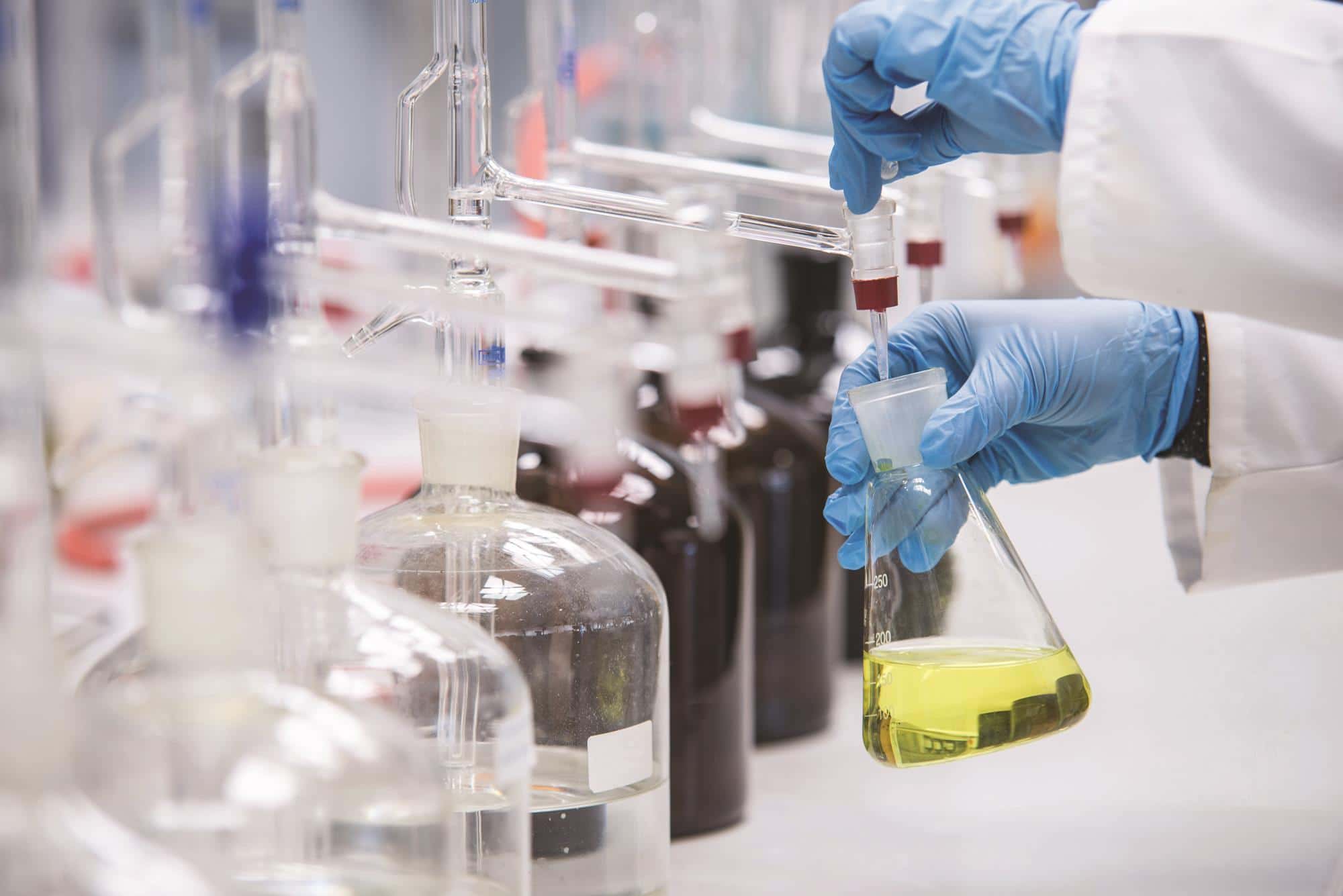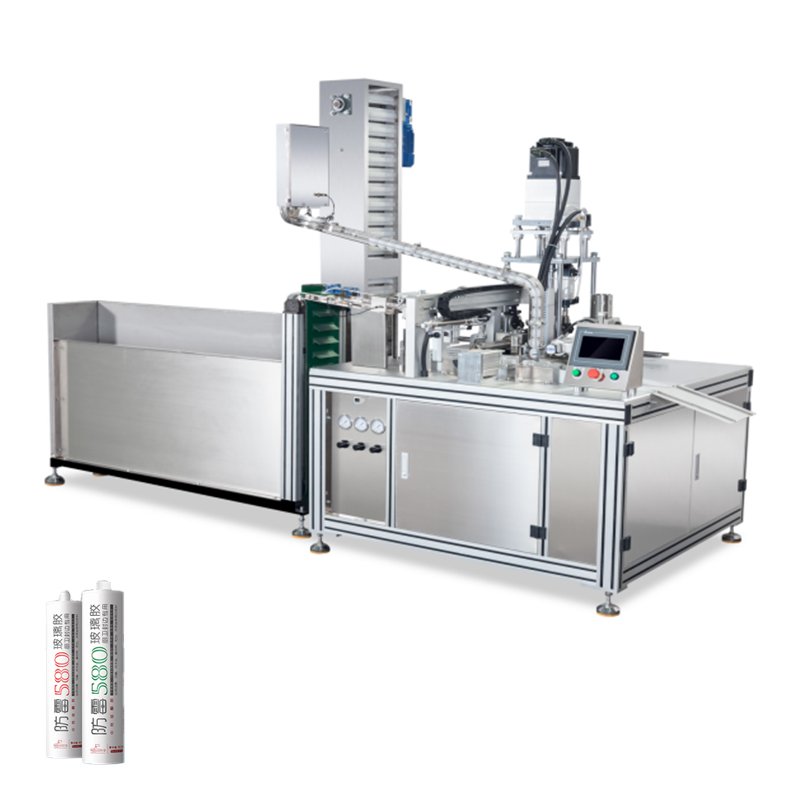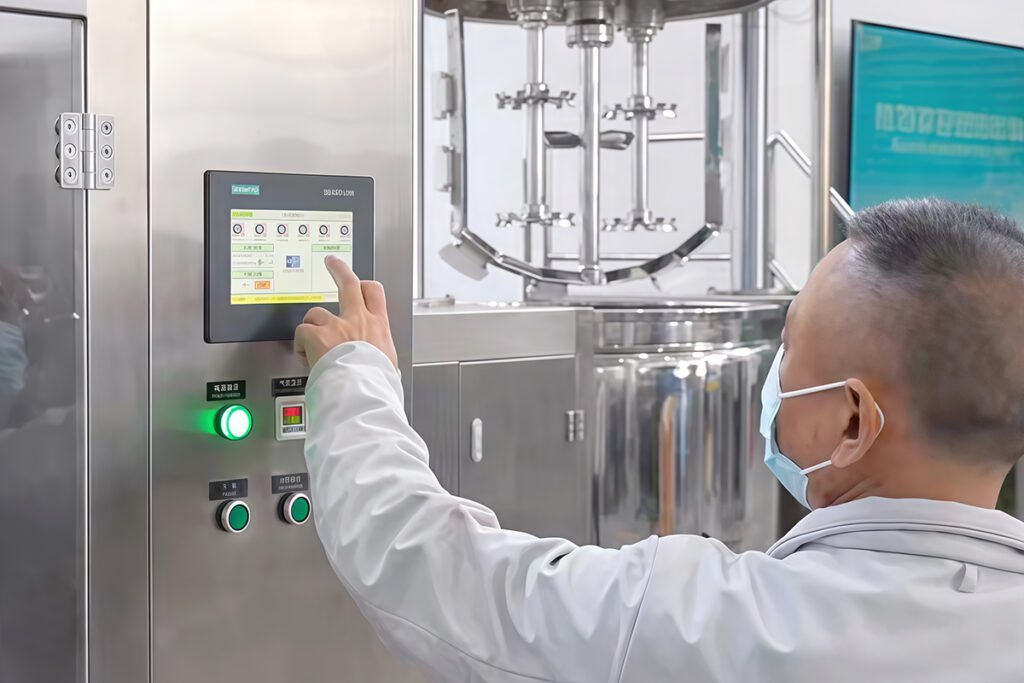What is a Pesticide Liquid Filling Machine?
A pesticide filling machine is specialized equipment designed to accurately and safely fill bottles or containers with liquid pesticides, liquid fertilizers, and chemical liquids. These machines automate the packaging process, replacing manual filling practices to meet the high demands of the agrochemical preparation industry. Their primary purpose is to streamline production in intelligent factories while ensuring consistent fill levels, reducing spillage, and minimizing operator exposure to hazardous chemicals.

Importance for agricultural chemical factories and distributors
For agricultural and chemical factories, pesticides filling machines play a crucial role in:
- Maintaining product quality and safety,
- Enhancing efficiency,
- Complying with environmental and safety regulations.
- Automated filling machines meet large packaging needs.
- They protect workers from chemical exposure. This is very important in the strictly controlled agrochemical industry.
Why does automated filling improve efficiency and safety?
By automating the filling process, these automated filling machines improve operational efficiency by significantly increasing throughput and reducing human error. Automation enhances safety by minimizing direct contact between workers and hazardous chemicals. This lowers the chance of spills, accidents, and contamination.
How Do Pesticide Liquid Filling Machines Work?
Step-by-Step Workflow of a Pesticide Filling Line
- Step 1: The process begins with the automatic feeding system that feeds empty containers onto a conveyor system. This automated bottle feeding ensures a continuous and steady supply of bottles, maintaining a smooth and efficient workflow throughout the production line.
- Step 2: Next step is the filling process, where the pesticide liquid is dispensed into HDPE bottles using precision pumps and nozzles. These components are carefully calibrated to deliver exact volumes of filling ranges, which is essential for maintaining consistency and meeting dosage specifications accurately.
- Step 3: It involves sealing the bottles by applying Teflon seals and securing caps. This capping process prevents leaks and protects the contents from contamination, ensuring that the pesticide remains safely contained.
- Step 4: Next comes the labeling stage, where each bottle is labeled with crucial product information. The label specifications include safety instructions and barcodes.
- Step 5: The last phase is packaging, where filled, capped, and labelled bottles are systematically packed into cartons or crates. Proper and intelligent packaging prepares the products for safe shipment and storage.
These steps ensure smart processing with exact filling. They improve worker safety by reducing manual handling. They also allow faster production to meet growing market needs.
Semi-Automatic vs Fully Automatic Machines
The choice between semi-automatic and fully automatic pesticide liquid filling machines depends on the operation scale and production needs.
- Semi-Automatic Machines:
A semi-automatic filling machine for pesticides requires manual intervention for certain key tasks, such as bottle feeding, positioning, and capping. Operators may need to load bottles onto the conveyor or place caps on the bottles before the machine completes the filling process. These machines are particularly well-suited for small farms, local distributors, or businesses with lower production volumes that cannot afford to invest in full automation. While semi-automatic volumetric liquid filling machines offer a lower initial cost, they require increased operator involvement, which can limit production speed and consistency, but provide greater flexibility for varied batch sizes.
- Fully Automatic Machines:
A fully automatic pesticide filling machine controls the whole filling line. It feeds bottles, fills them precisely, caps them, labels them, and packages them. These machines are engineered for high-capacity industrial production facilities where throughput and efficiency are critical. By minimizing human intervention, fully automatic piston filling machines significantly reduce labor costs and risk of operator exposure to hazardous chemicals, while maximizing production speed and consistency. This makes them ideal for large-scale manufacturers who require fast, continuous output to meet growing market demands.
Types of Pesticide Liquid Filling Machines
There are several types of insecticide filling machines, designed to meet various production demands and liquid properties:

- Semi-Automatic Fillers: Operators load bottles and initiate the filling process, making them suitable for flexible yet small-scale operations.
- Fully Automatic Fillers: Automated bottle handling and filling are ideal for large volumes and minimal human contact. It is also best for volumetric-based filling.
- Gravity Fillers: Use the force of gravity to dispense liquids. This process of gravity filling is best for thin, low-viscosity pesticides.
- Pressure Fillers: Use pumps to push liquid into bottles, which is particularly beneficial for viscous or foaming pesticides, such as emulsifiable concentrates.
Additionally, machines can be categorized based on their mechanical design:
- Linear Machines: Bottles move in a straight line through each filling stage, enabling faster filling rates and compact layouts that are often easier to customize and maintain.
- Rotary Machines: Bottles rotate on a carousel, enabling faster filling rates and compact layouts that are ideal for high-volume production.
Other than these, there are , semi-automatic volumetric filling machines, Volumetric Piston Fillers, and flow meter filling machines.
Advantages Over Manual Filling Methods
Compared to manual filling methods, pesticide liquid filling machines offer significant improvements in accuracy, safety, and efficiency. Manual filling relies heavily on human precision, which can lead to inconsistent fill volumes, resulting in product waste or customer dissatisfaction. Automated machines use smart technology. They have precise pumps and nozzles. These parts deliver exact amounts of liquid. This ensures the product quality is always the same.
Additionally, manual handling of pesticides poses serious health risks due to chemical exposure and potential spills. Automated filling minimizes direct operator contact with hazardous substances, greatly reducing safety risks. Furthermore, the insecticide fill accuracy helps prevent spills and contamination, maintaining a cleaner workspace and lowering environmental hazards. Automation helps workers produce more in less time. It also ensures smart storage.
Pesticide Liquid Filling Machine Construction and Components
A pesticide liquid filling machine is composed of several key components designed for durability and chemical resistance:
- Filling Pump: The heart of the machine, responsible for precise liquid dispensing. Pumps typically are peristaltic, piston, or gear types tailored to handle corrosive liquids. Servo systems are used to control the motor that drives the system.
- Filling Nozzle: Designed to minimize drips and spills during filling, often equipped with anti-drip features.
- Conveyor System: Transports bottles steadily through each production stage, ensuring smooth and intelligent operation.
- Capping System: Automatically applies and tightens caps smoothly. This seal and cap applicator is specifically designed for the bottle type, cap size, and design.
- Control Panel: it consists of a touch screen that allows operators to program filling volumes, speed, and monitor machine status for optimized performance.

Materials used in the construction of valves and pumps prioritize resistance to harsh chemicals. Stainless steel is commonly used for frame and liquid-contact parts due to its corrosion resistance and durability. Chemical-resistant plastics and rubber seals attached through sealing heads prevent degradation from pesticide exposure.
Optional features further enhance operation:
- Inline Labeling: Automates labeling to comply with regulatory standards. This includes labelling specifications of different sizes with different roll diameters.
- Automated Capper: Ensures consistent cap tightness and improves throughput.
- Explosion-Proof Design: Essential for handling flammable pesticides, protecting the facility and operators.
Benefits of Using a Pesticide Liquid Filling Machine
The integration of a pesticide liquid filling machine brings multiple benefits to manufacturers and distributors:
- Enhanced Precision and Uniformity:
Modern filling machines utilize advanced pumps and reciprocating nozzles that accurately dispense liquid pesticides with exceptional precision. This ensures each container is filled consistently, dramatically reducing product waste and maintaining the highest level of product quality and integrity throughout the packaging process.
- Improved Operator Safety:
By automating the filling process, manual handling of hazardous pesticides is significantly reduced. This lowers the risk of chemical exposure, spills, and related accidents, creating a safer working environment and promoting safety features. This helps protect operators from potential health hazards associated with direct contact with toxic substances.
- Accelerated Production Efficiency:
Automation enables pesticide-filling machines to operate at much higher speeds than manual methods. Higher production and faster filling let manufacturers handle large orders quickly. This improves efficiency. It shortens turnaround times. Accuracy and safety stay high.
- Flexible Compatibility with Containers:
These pesticide filling machines are designed with filling heads that can handle a wide range of bottle sizes, shapes, and fill volumes. This flexibility lets manufacturers package different chemical products with the same machine. They can quickly adjust to market changes. This reduces the need for many special machines.
What to Consider Before Buying a Pesticide Liquid Filling Machine
Selecting the right pesticide liquid filling machine involves careful consideration of several factors:
- Production Capacity and Batch Size: Match the machine to your daily output requirements to optimize investment.
- Chemical Compatibility: Ensure machine materials resist corrosion and degradation from your specific liquid fertilizer.
- Budget and ROI: Balance initial purchase cost with potential labor savings and production efficiency improvements.
- After-Sales Support: The availability of spare parts, such as AC motors, technical support, and maintenance services, ensures long-term machine reliability.
- Regulatory Compliance: Verify the machine meets agricultural and safety standards to avoid legal issues and promote green development.
- Energy Efficiency and Safety: Look for machines designed to minimize electrical power consumption while maintaining operator safety with features like emergency stops and explosion-proof components.
Maintenance and Troubleshooting Tips
Maintaining a chemical liquid filling machine is critical for sustained performance and longevity:
- Regular Cleaning: Frequent cleaning with chemical-resistant solutions prevents residue buildup and contamination.
- Pump and Nozzle Calibration: Periodically adjust pumping rates and nozzles to sustain filling accuracy.
- Common Issues: Watch for leaks, nozzle clogging from viscous or particulate-laden pesticides, and bottle jams due to improper feeding or conveyor issues.
Prompt troubleshooting and preventative maintenance reduce downtime and repair costs.
Conclusion
Pesticide liquid filling machines assist pesticide manufacturers and distributors in numerous ways. They improve production speed, ensure accurate filling, and make work safer for operators. These machines automate dangerous and repetitive tasks in pesticide packaging. They reduce errors and increase output. They help companies stay competitive by following industry trends and rules. Choosing the right machine type is important. Using materials that work well together helps. Regular maintenance is also needed. These steps increase return on investment. They support sustainable agricultural chemical work.
If you are in the market for a reliable pesticide filling machine, choosing a trustworthy manufacturer can be the first step toward growth. King Pack Filling Machine is a leading manufacturer that provides highly automated machines best suited for upgrading or establishing a pesticide filling line. Contact us now to learn more.




